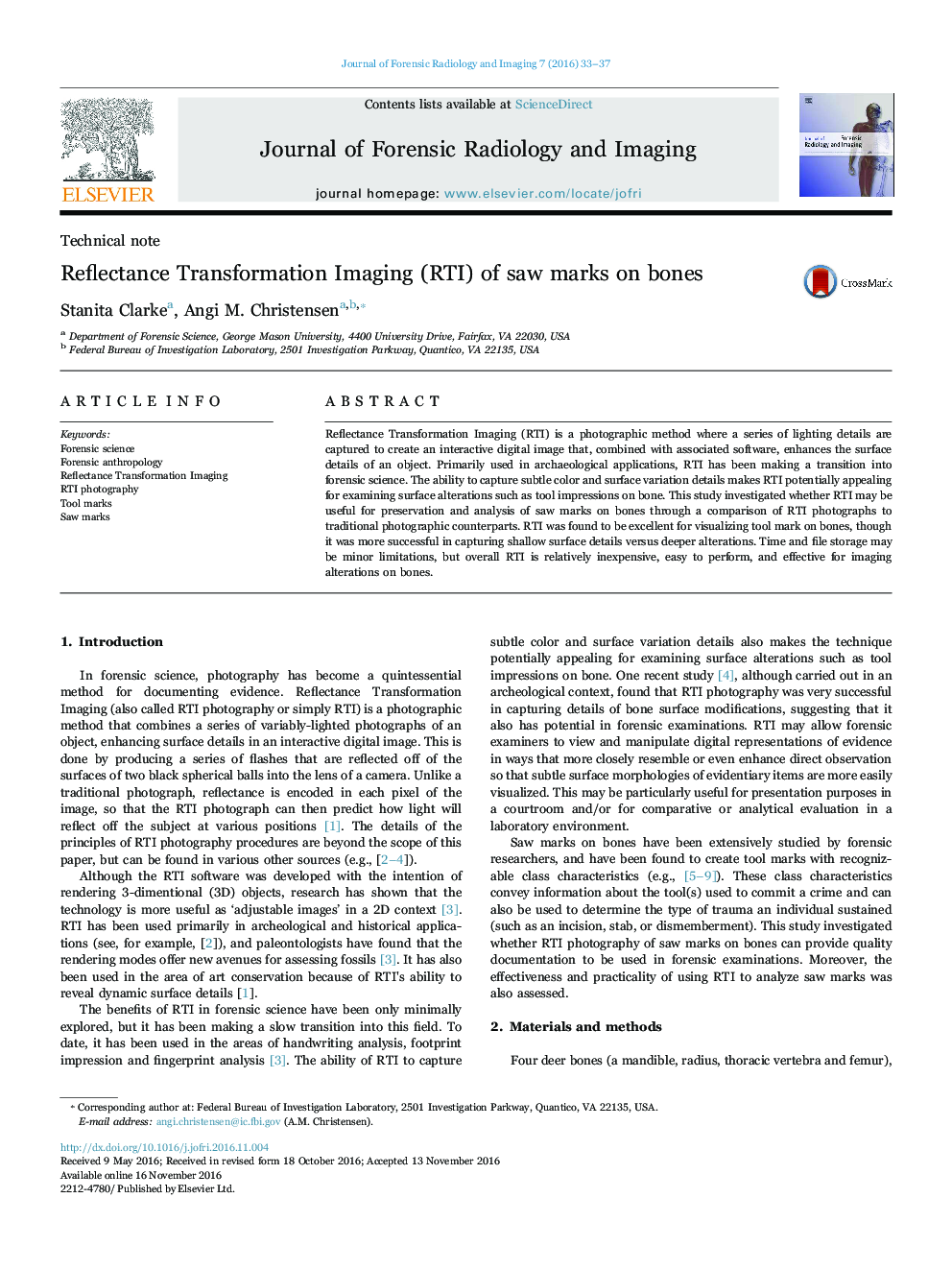| Article ID | Journal | Published Year | Pages | File Type |
|---|---|---|---|---|
| 4760813 | Journal of Forensic Radiology and Imaging | 2016 | 5 Pages |
Abstract
Reflectance Transformation Imaging (RTI) is a photographic method where a series of lighting details are captured to create an interactive digital image that, combined with associated software, enhances the surface details of an object. Primarily used in archaeological applications, RTI has been making a transition into forensic science. The ability to capture subtle color and surface variation details makes RTI potentially appealing for examining surface alterations such as tool impressions on bone. This study investigated whether RTI may be useful for preservation and analysis of saw marks on bones through a comparison of RTI photographs to traditional photographic counterparts. RTI was found to be excellent for visualizing tool mark on bones, though it was more successful in capturing shallow surface details versus deeper alterations. Time and file storage may be minor limitations, but overall RTI is relatively inexpensive, easy to perform, and effective for imaging alterations on bones.
Related Topics
Health Sciences
Medicine and Dentistry
Forensic Medicine
Authors
Stanita Clarke, Angi M. Christensen,
